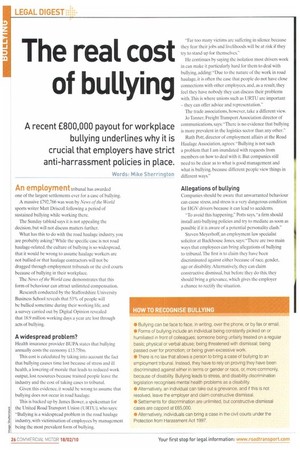HOW TO RECOGNISE BULLYING
Page 26

If you've noticed an error in this article please click here to report it so we can fix it.
• Bullying can be face to face, in writing, over the phone, or by fax or email.
• Forms of bullying include an individual being constantly picked on or humiliated in front of colleagues; someone being unfairly treated on a regular basis; physical or verbal abuse; being threatened with dismissal; being passed over for promotion; or being given excessive work.
• There is no law that allows a person to bring a case of bullying to an employment tribunal, Instead, they have to rely on proving they have been discriminated against either in terms or gender or race, or, more commonly, because of disability. Bullying leads to stress, and disability discrimination legislation recognises mental health problems as a disability.
• Alternatively, an individual can take out a grievance, and if this is not resolved, leave the employer and claim constructive dismissal.
• Settlements for discrimination are unlimited, but constructive dismissal cases are capped at E65,000.
• Alternatively, individuals can bring a case in the civil courts under the Protection from Harassment Act 1997.
































































































































